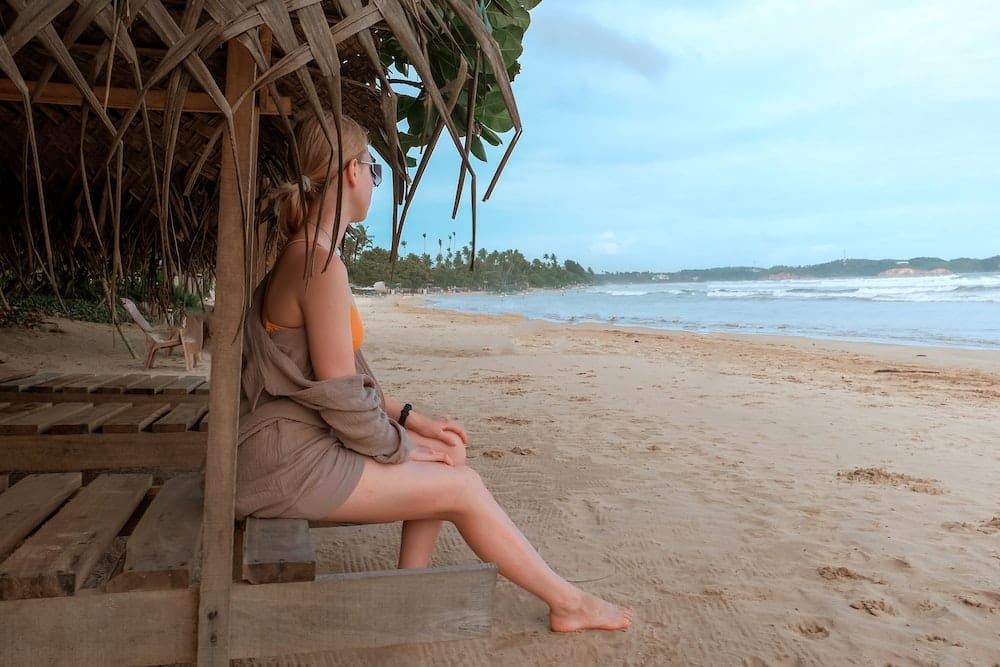How to Design a Backyard Retreat with a Hammock and Waterfall?

Many of you may be wondering how to transform your outdoor spaces into a tranquil oasis. A well-designed backyard can indeed become a sanctuary, a place where you can unwind, entertain, or simply enjoy the beauty of nature. The best way to maximize the potential of these spaces is by incorporating elements that reflect your personal style and cater to your lifestyle needs. In this article, we will share some innovative ideas on how you can create a stunning backyard retreat with a hammock and a waterfall.
Choosing the Ideal Plants
Creating a backyard retreat begins with choosing the right plants. Not only do they add visual appeal, but plants also create a serene ambiance. They can shape your landscape design, provide shade, privacy, and even act as natural sound barriers. Some plants are particularly well suited to pair with water features, while others are perfect for creating a hammock oasis.
En parallèle : How Can You Organize a Linen Closet to Function as a Mini Home Spa?
When considering plants for your backyard retreat, look for species that will thrive in your climate and soil conditions. The size, foliage color, and blooming season are other important factors to consider. You might want to include a mix of evergreens for year-round color, flowering plants for seasonal interest, and some native species that attract local wildlife.
Plants like ferns, hostas, and mosses love the moist environment near waterfalls. They will add texture and lushness to your design. On the other hand, tall trees or large shrubs can provide the necessary support and shade for your hammock.
A lire aussi : How to Design a Timeless English Garden with a Modern Twist?
Designing the Patio Area
The patio area serves as the heart of your backyard retreat. This is where you’ll likely spend most of your time, whether it’s lounging in your hammock, dining al fresco, or enjoying the soothing sounds of your waterfall. Creating a well-designed patio space is therefore essential.
Start by determining the best location for your patio. It needs to be easily accessible from your house, yet also offer a good view of the garden and waterfall. Next, select materials that complement your home’s exterior and the surrounding landscape. Whether you prefer natural stone, concrete, or wood, make sure it’s durable and weather-resistant.
Once you’ve laid out your patio, think about the furniture. A hammock is a must, of course. But consider also including comfortable seating, a dining table, or even an outdoor fire pit for colder months. Outdoor rugs, throw pillows, and other accessories can add color and personality to your space.
Incorporating a Water Feature
Water features are a fantastic way to enhance your backyard retreat. The sound of flowing water is naturally soothing and can help mask unwanted noises from the surrounding area. In addition, a waterfall or pond can attract birds and other wildlife, adding another dimension to your backyard ecosystem.
The size, shape, and style of your water feature will depend on your personal preference and the available space. You might opt for a small, simple waterfall that tumbles over rocks into a pond, or a more elaborate design with multiple cascades. Make sure the water feature is visible from the patio and hammock area, so you can enjoy it to the fullest.
Creating a Fire Area
Adding a fire pit or fireplace to your backyard design can provide warmth on chilly evenings and create a cozy ambiance. A fire area can be a great addition to your patio space, or it could be a separate nook in the yard, perfect for roasting marshmallows or sipping a glass of wine by the firelight.
The style of your fire area should match the overall design of your backyard. A rustic fire pit made of natural stone will blend seamlessly into a garden setting, while a sleek, modern fireplace might be more fitting for a contemporary design. Whatever you choose, safety should be a top priority. Ensure the fire area is well away from overhanging branches, fences, or other combustible materials.
Adding a Pool
If space and budget allow, a pool can be an excellent addition to your backyard retreat. Not only does it provide a cool respite on hot summer days, but it also adds a visual element that complements your waterfall and other landscape features.
Designing the pool area requires careful planning. Think about its shape, size, and depth, as well as the type of decking or patio area that will surround it. You might also want to consider features like underwater lighting, a pool fence for safety, or even a hot tub for added luxury.
No matter what elements you choose to incorporate, the key to designing a successful backyard retreat is to create a space that reflects your personality and fits your lifestyle. With thoughtful planning and the right design choices, you can transform your outdoor space into a backyard oasis you’ll enjoy for years to come.
Optimizing Space for an Outdoor Kitchen
An outdoor kitchen can significantly enhance your backyard retreat, providing a practical solution for meal preparations without the heat and mess associated with indoor cooking. Designing an outdoor kitchen involves deciding on the essential appliances such as grills, stoves, refrigerators, sinks, and even pizza ovens.
The positioning of your outdoor kitchen should take into consideration its proximity to the indoor kitchen for ease of accessibility, the direction of the wind to avoid smoke from the grill going into your house or patio area, and lastly, the view – ideally, it should provide a vantage point to the waterfall, pool, and hammock area.
Material choice for the outdoor kitchen should withstand the outdoor elements. Stainless steel is a favorite choice due to its durability, ease of cleaning, and resistance to rust and corrosion. When it comes to countertops, granite, concrete, and tile are popular due to their durability and heat resistance.
Remember, the primary purpose of your outdoor kitchen should not just be about cooking but also promoting social interaction. Therefore, incorporate comfortable seating areas where guests can relax and interact while food is being prepared.
Implementing Low Maintenance Landscaping
One key element that should not be overlooked when designing your backyard retreat is the need for low maintenance landscaping. The last thing you want is a garden that demands your attention more than it allows you to relax.
Opt for plants that require less water and care, like succulents and native species. Installing a drip irrigation system can also save you hours of watering. Mulching is another low maintenance landscaping idea that helps retain soil moisture and suppress weeds.
Consider using gravel or other permeable materials for your pathways. Not only are they less prone to cracks compared to concrete, but they also reduce runoff and increase the ground’s ability to absorb water.
Your outdoor furniture should be easy to clean and able to withstand the elements. Opt for materials like teak, cedar, metal, or all-weather wicker. Additionally, choose fabrics designed for outdoor use that resist fading, mildew, and stains.
Conclusion
Designing a backyard retreat with a hammock and a waterfall is all about creating a space that resonates with your lifestyle and personal preferences. From choosing the right plants and designing the patio area to incorporating a water feature, creating a fire pit, adding a pool, optimizing space for an outdoor kitchen, and implementing low maintenance landscaping – each element plays a crucial role in enhancing the overall aesthetics and functionality of your outdoor space.
Remember that each backyard is unique, and what works for one might not work for another. Therefore, take into consideration your backyard’s size, shape, and topography, along with your region’s climate and soil conditions. With adequate planning and thoughtful design, your backyard can transform into a calming retreat where you can escape the hustle and bustle of everyday life, rejuvenate, and create cherished memories with friends and family.
